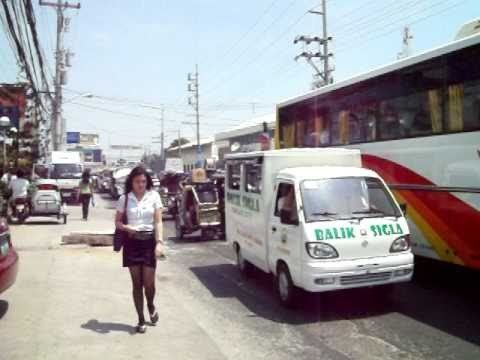District 2nd District Cityhood April 18, 1998 Population 318,332 (2010) | Founded 1788 Area 274.7 km² Local time Monday 9:42 AM | |
 | ||
Weather 30°C, Wind E at 13 km/h, 60% Humidity Colleges and Universities Tarlac State University, College of the Holy Spirit of Tarlac, STI College - Tarlac Neighborhoods Maliwalo, Tariji, Matatalaib, Balingcanaway | ||
Sm mall tarlac city philippines
Tarlac City, officially the City of Tarlac (Kapampangan: Lakanbalen ning Tarlac; Pangasinan: Siyudad na Tarlac; Ilocano: Ciudad ti Tarlac, Tagalog: Lungsod ng Tarlac), is a first class and capital city of the province of Tarlac in the Philippines. According to the 2015 census, it has a population of 342,493 people.
Contents
- Sm mall tarlac city philippines
- Map of Tarlac City Tarlac Philippines
- Alaminos pangasinan hundred islands and tarlac city
- Geography
- Barangays
- Demographics
- Religion
- Transportation
- Shopping
- Festivals
- Sister cities
- References
Map of Tarlac City, Tarlac, Philippines
Tarlac City was proclaimed a Highly Urbanized City under President Gloria Macapagal-Arroyo, but the decision was opposed by the provincial government.
Alaminos pangasinan hundred islands and tarlac city
Geography
The city is situated at the center of the province. To its north is Gerona and Santa Ignacia, west is San Jose, south is Capas and Concepcion and eastern boundaries are Victoria and La Paz. This is also the location of Tarlac River.
Tarlac City is approximately 24 metres (79 ft) above sea level on some parts but reaching even 50 metres (160 ft) on large western portions. Tarlac City was historically a part of what is now Porac, Pampanga. Parts of Tarlac city are claimed to be among the few portions of land in the province which was not created by ancient eruptions from Mount Pinatubo.
Barangays
Tarlac City is politically subdivided into 76 barangays.
Demographics
In the 2015 census, the population of Tarlac City was 342,493 people, with a density of 1,200 inhabitants per square kilometre or 3,100 inhabitants per square mile.
Religion
According to statistics compiled by the Philippine government, the most dominant religion in the city is Christianity with 73% of the population adhering to the faith. The majority of Christians are Roman Catholics followed by a large concentration of Iglesia ni Cristo (Church of Christ). Other Christian groups belong to various Protestant denominations. The remaining 27% being non-Christian such as Muslims, etc.
Transportation
Tarlac City is the usual bus stop for commuters travelling to the Ilocos Region and Cordillera provinces. Bus companies that take a route through the city include Philippine Rabbit, Victory Liner, Five Star, Partas, Baliwag Transit, Farinas Transit, Genesis, Santrans, de Leon Express, GV Florida, and many others. Many of the bus companies' stations can be found along MacArthur Highway namely Siesta and Motorway.
The MacArthur Highway goes from the southern to the northern end of the city. There are a series of roads leading to Zambales and Pangasinan as well as Baguio City. Most buses passing through the town of Camiling onwards to Pangasinan usually take the Romulo Highway which forks from MacArthur Highway along Brgy. San Roque.
Shopping
There are several shopping malls established within the city. To name a few, there is the SM City Tarlac, which is the first SM Supermall in the Tarlac Province, located along McArthur Highway in San Roque; Plaza Luisita Mall, which is the first shopping center in Central Luzon (now Robinsons Luisita; the Magic Star Mall along Romulo Blvd. in Brgy. Cut-cut; My MetroTown Mall in Brgy. Sto Cristo; Palm Plaza Mall located along McArthur Highway corner F. Tanedo St. Brgy. Matatalaib; CityWalk also located in Brgy. San Roque and the Double Dragon's CityMall (u/c) located in Brgy. San Rafael.
Festivals
The Malatarlak Festival, celebrated every January in Tarlac City, is one of the most remarkable festivals in the province. In 2011, the City Mayor then changed the name of the festival to Melting Pot Festival, but it is still remembered by its former name. The festival is a commemoration to the first people who built civilization in the province, the Aetas.
